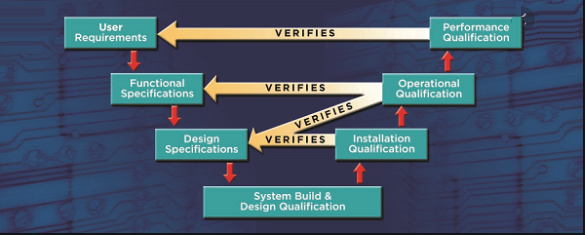Operational Qualification Protocol
PURPOSE
To describe the Operational Qualification of Name of the Equipment and to define the specification of the system in order to:
Ensure that the equipment will be operationally qualified in accordance with current Good Manufacturing Practices
Ensure that the equipment meets the Operational/Design limits as per user requirements.
SCOPE
The scope of this document applies to the operational qualification of Name of the Equipment.
RESPONSIBILITIES:
It is the responsibility of the Manufacturer to prepare the Operational qualification protocol and identify the test parameters to be studied for qualifying the Name of the Equipment
It is the responsibility of the client to check and approve the Operational qualification protocol.
It is the responsibility of the Manufacturer to perform all the tests with respect to Operational qualification and compiling data in co-ordination with client.
PROCEDURE
The following requirement / practices apply to Name of the Equipment Operational Qualification activities:
To verify the components design parameters.
Review the preventive maintenance procedures, cleaning procedures and general operational procedure to ensure that they are comprehensive for reliable performance of the equipment.
OPERATIONAL QUALIFICATION TESTS
The table below lists the tests to be performed as part of the Operational Qualification phase.
| TEST NUMBER | CRITICAL FEATURE |
| Main Panel/Control Panel Testing | |
| Power & Communication Failure Recovery Verification | |
| Main Operational Parameter. (E.g.. RPM Verification) |
Main Panel / Control Panel Testing.
Purpose :
To verify that the response of the equipment at the input from various
Push button / Switches on control or main panel is as per the system design.
Test equipment – None Required.
Procedure – Give inputs from various Push buttons & Switches on Control Panel / Main Panel & observe the Response from the machine.
Acceptance Criteria :
The equipment will respond as mentioned in the target column of the table given below.
Take dry run of the equipment to ensure that all controlling parameters &functions are reproducible.
Test Results
| Input | Target | Actual |
| Control OFF/ON switch on control panel switched ‘ON’ | Control ON indicating lamp will glow. | |
| ‘ON’ push button is pressed. | Machine starts working | |
| ‘OFF’ push button is pressed. | Machine stops working |
Power & Communication Failure Recovery Verification
Rationale – To verify that in the event of a power loss or communications failure, the equipment will stop in safe condition.
Test equipment – None Required.
Procedure for Power and Communication Failure Recovery test –
Operate the equipment as directed in the User Manual.
While the equipment is operating, shut down the power to the main control panel. Record if the equipment stops in a safe and secure condition.
Wait for 5 minutes then restore power to the equipment.
Check whether system is start running once the power is restored
The system is not starting of its own, restart the equipment and note any adverse condition.
Acceptance criteria –
the equipment shall stop in safe and secure condition.
the equipment should not start of its own after the power is restored without user permission
the equipment can be restarted with no problems or adverse conditions observed.
Power and Communication Failure Recovery test results
| Test | Results | Meets Test (Yes / No) |
| Main Power Shut Down | Equipment stops in a safe and secure condition. | |
|
Main Power Restored |
Equipment is not starting of its own without user permission | |
| Equipment can be restarted with NO problems or adverse conditions observed |
- Main Operational Parameter. (Eg. RPM Verification)
- Purpose – To verify the RPM of blade roller.
Test equipment – Digital Tachometer.
Procedure :
Start the equipment as per user manual.
Observe the rotation of the equipment for ‘1’ minute (Note down the value in respective trial column) using tachometer.
Continue the procedure for totally ‘3’ times.
Acceptance Criteria – The average RPM of the blade roller should match with the specified RPM.
RPM verification test results
| Acceptance Criteria | Trial-1 ,No of Revolution | Trial-2 ,No of Revolution | Trial-3 ,No of Revolution | Average RPM |
| 20±1 rpm |
Note: Average RPM = (Trial-1 + Trial-2 + Trial-3) / 3
Operational Qualification Tests Status
The table below lists the tests performed and related results.
| Test Number
|
Critical Feature
|
Pass / Fail | |
| Pass | Fail | ||
| Main/Control Panel Testing | |||
| Power & Communication Failure Recovery Verification | |||
| Main Operational Parameter. (E.g.. RPM Verification) | |||
LIST OF STANDARD OPERATING PROCEDURES
| Description | SOP No |
| Operating Procedure of Name of the Equipment | |
| Cleaning Procedure of Name of the Equipment | |
| Preventive maintenance of Name of the Equipment |
Data Analysis, Summary of OQ & Recommendations:
CONCLUSION

